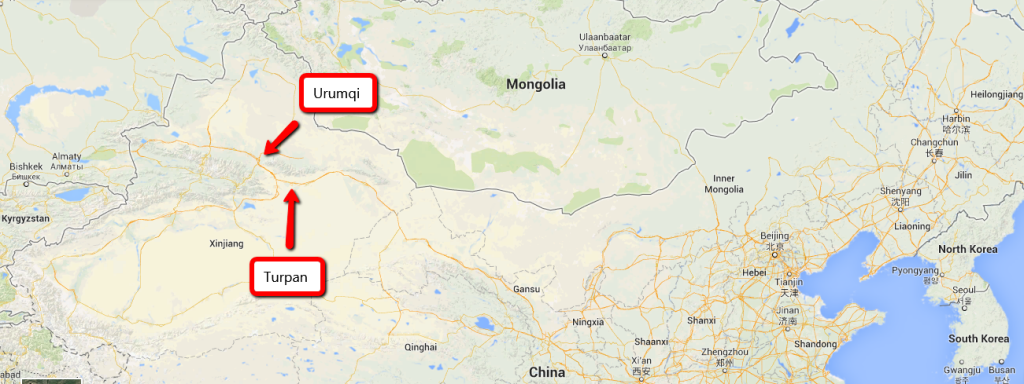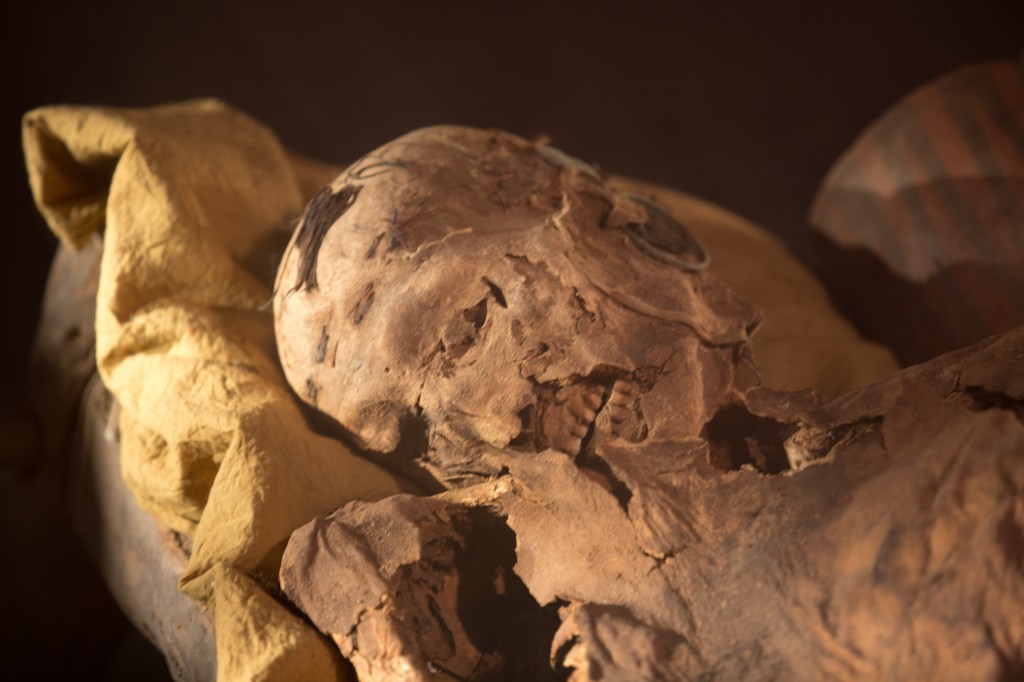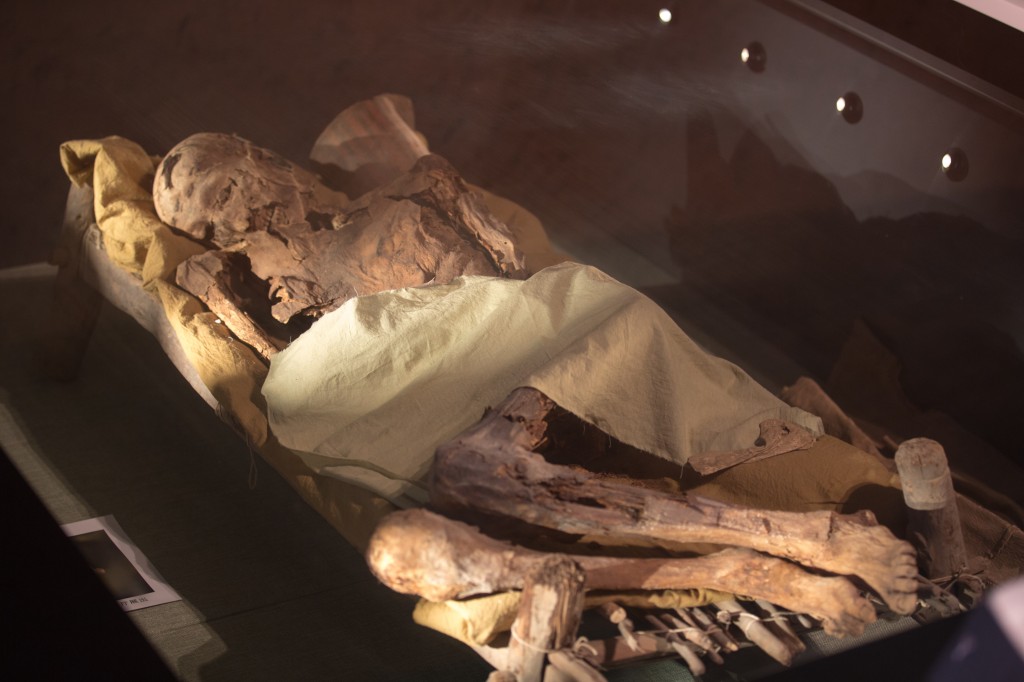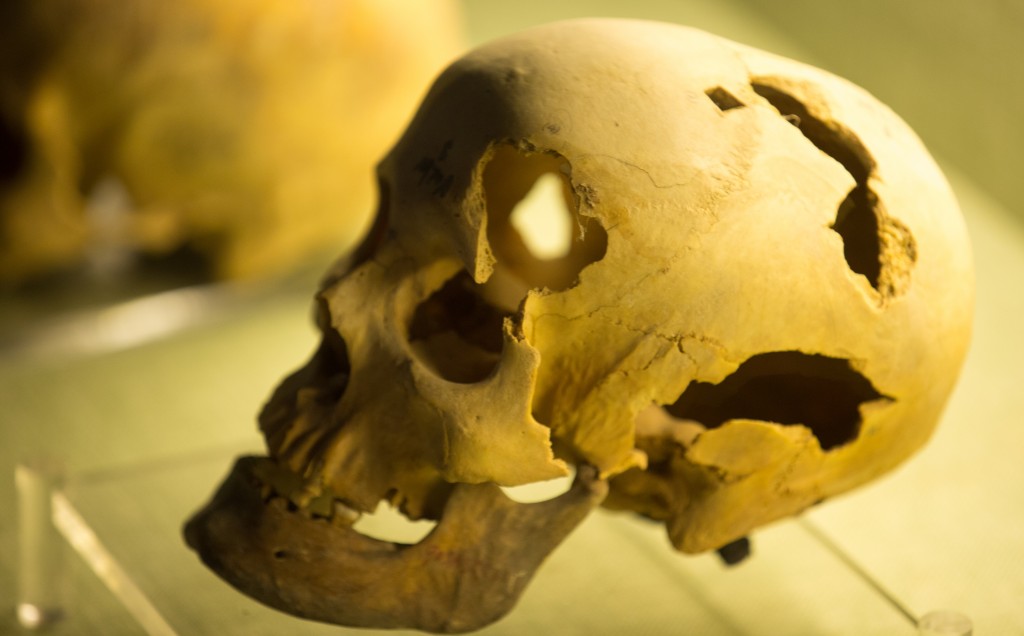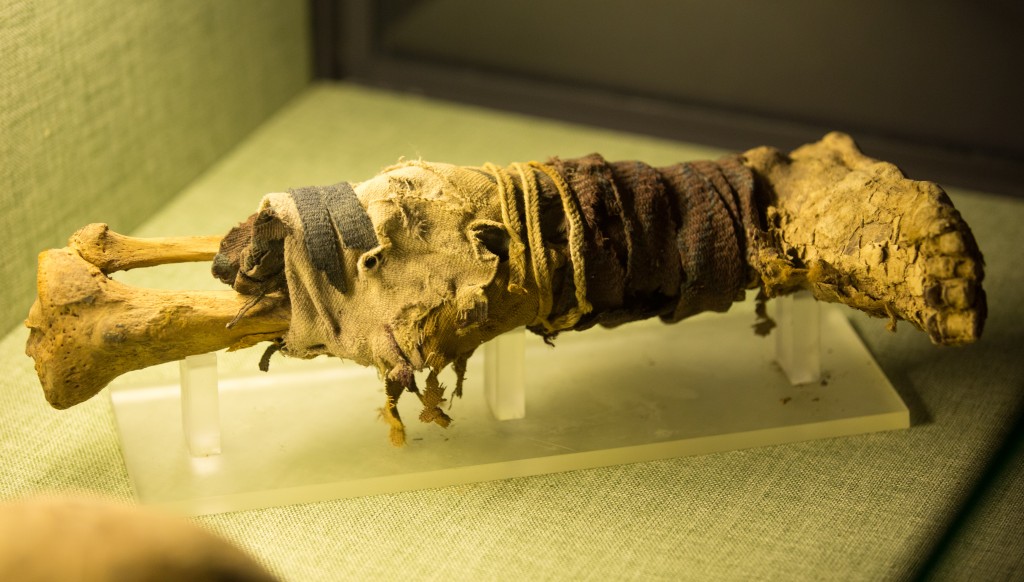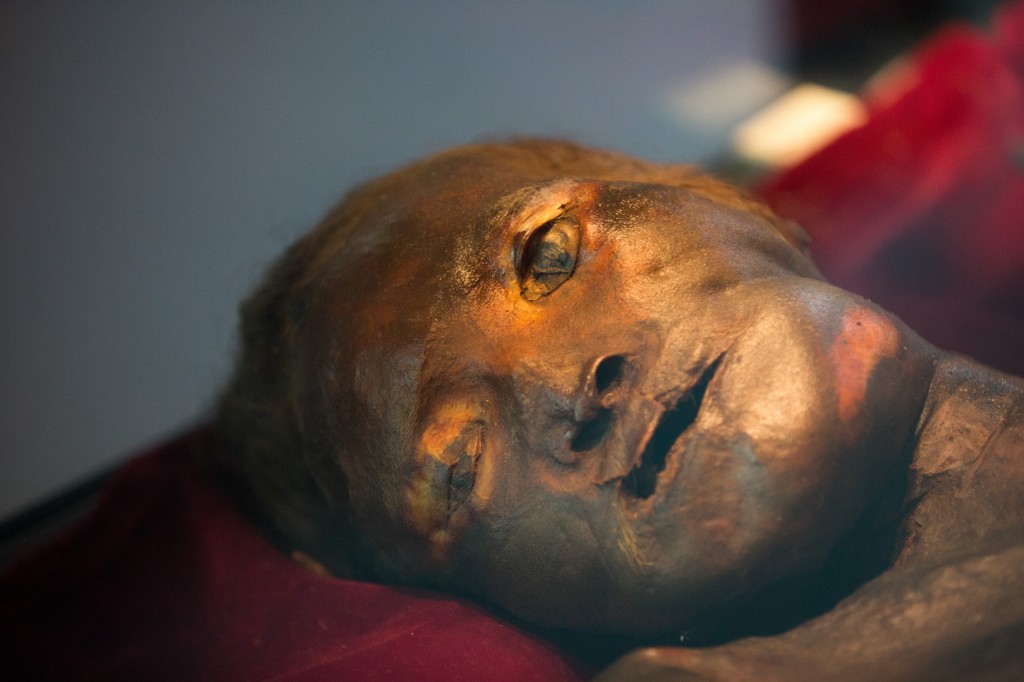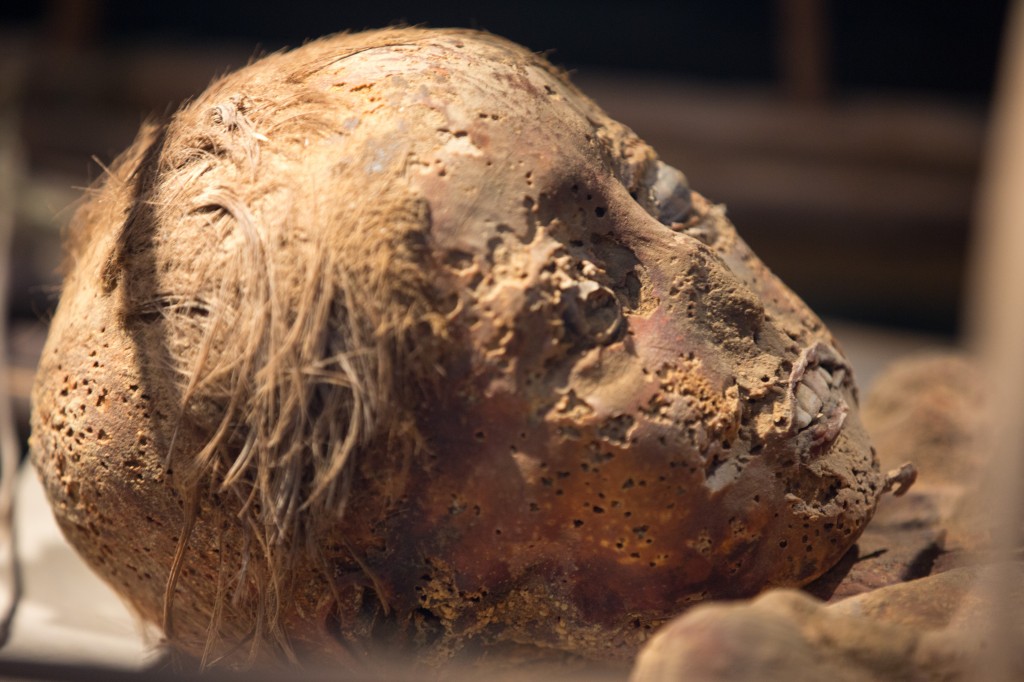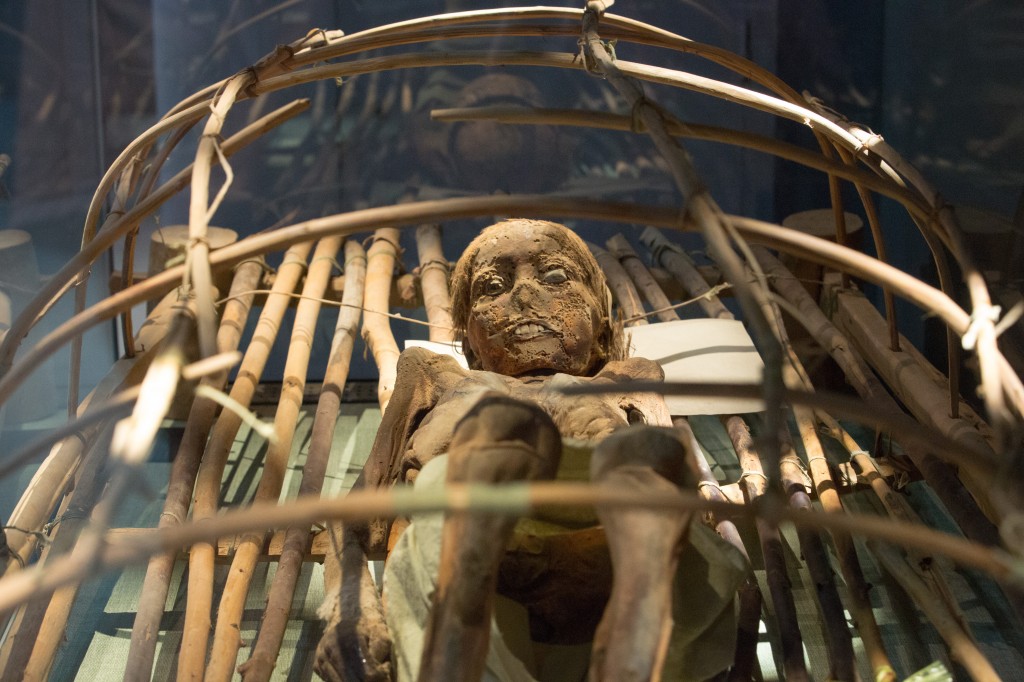I entered the museum’s exhibit hall. The air was quiet and the entrance dark. The sensation was not normal for China. It felt like I was entering a church, somewhere holy and slightly frightening.
Inside the first exhibit, the rumpled body of a man lay on a wooden bed, his legs folded up, a white towel laying across his waist. Initially, I thought a mask was covering the upper half of his face and head, though, the more I looked, the less certain of that I was. I could not see them, but, I read that his eyes were blue. His hair, a rusty brown, completely different from the jet black hair of the Han Chinese. A hoop, possibly an earring, lies pressed against his chin, right where his ear would have been. I could count his sunken ribs until they disappeared under the white towel.
The mummy was a two thousand seven hundred years old shaman. Beside him, they had found a basket full of almost two pounds of marijuana, which archaeologists assume was either for religious or psychoactive purposes, the oldest known use of marijuana as a drug. In other words, this man was the world’s oldest known drug dealer.
In the glass case beside the mummy, three skulls and a foot glowed in the yellow light. Two of the skulls had several holes on top and the foot was wrapped in some sort of sock. Though they were fused together, I could still distinguish the individual toes and the small indentions of toenails. I found the level of detail preserved equally fascinating and disturbing. So much was still left.
Being on the northern edge of the Taklimakan Desert, Turpan is hot. It is the hottest place in China. The average high for July is 104 Fahrenheit, though it has been measured as high as 119. Rain is a rare event. In a year, Turpan gets little more than half an inch of rain. Hot and dry, these are perfect conditions for preservation of the human body through mummification.
Although Egypt is most famous for mummies, other places, like Turpan, also have rich histories of mummification, and the Turpan Museum is the beneficiary of this. Mummies have been excavated throughout Xinjiang, some of them red-headed mummies from ethnic groups related to Europeans. The mummies in Turpan Museum were only discovered in nearby mountains in 2007, and are the star attraction of the museum.
Despite these amazing mummies, the museum was strangely quiet as I wound my way around the mummy exhibit. In the half hour I spent there, less than ten visitors came in. I talked to one of the museum docents. Normally, she said, between May and September, the museum would be filled with an average of three to five thousand visitors a day. But this year, because of the outbreaks of ethnic violence in Xinjiang, they had not had more than a thousand visitors a day. On the day I visited, I guessed there were probably no more than five hundred visitors.
Though I was disappointed that more people were not getting to see these amazing mummies, this drop in visitation did give the mummy exhibit a quiet, holy feeling.
I approached another mummy, a child, resting on what appeared to be a wooden raft. His internal organs had disappeared but remains of skin were wrapped around his rib cage in splotches of brown, orange and white. I moved closer to his head. His hair was a light brown and his eyes almost looked blue. His lips were pursed around his upper teeth, and it looked as though he were grinning at me. He stared back at me across the centuries.
